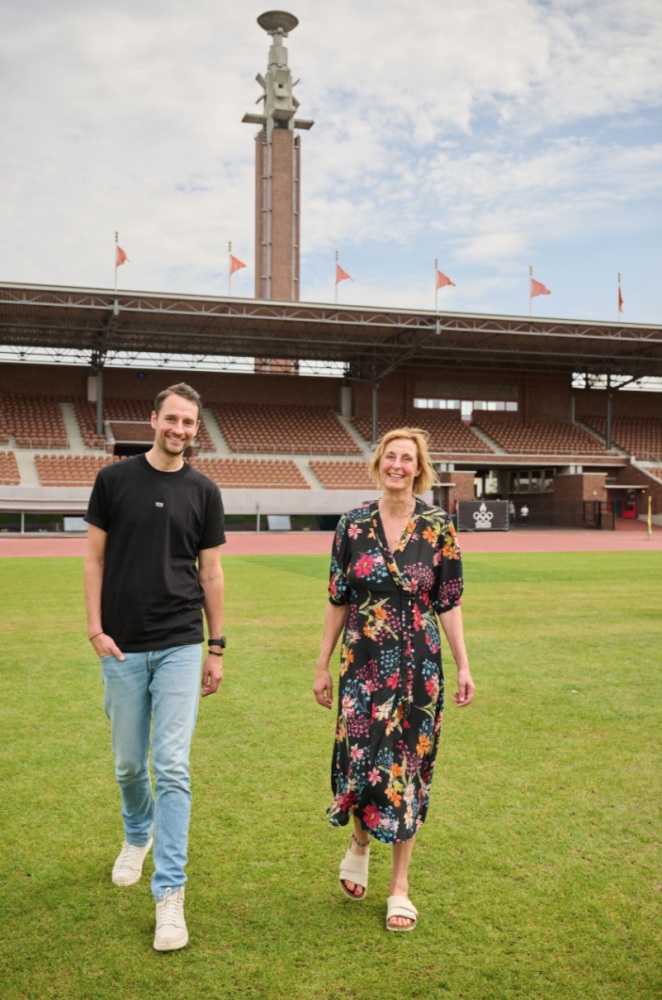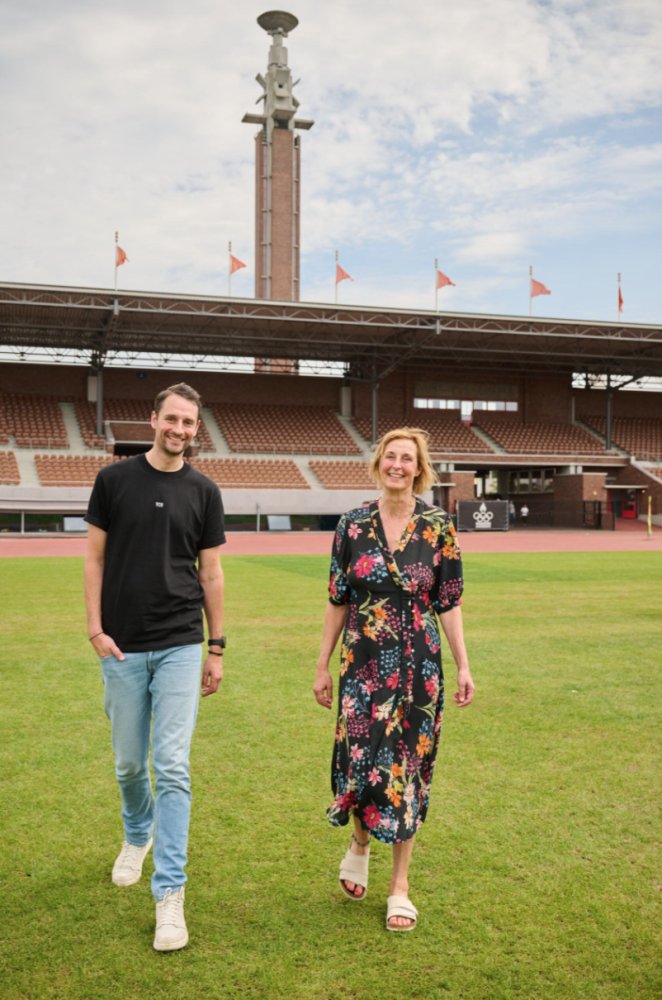Strategic vision for Olympic Stadium aims to improve mobility and sustainability for better access
Amsterdam Olympic Stadium director Carla de Groot and head of events Gregor Hogetoorn have personally witnessed the evolution of Zuidas and the surrounding area over the years, along with the knock-on effects on event access and organisation. Carla joined the stadium in 2000, where her first big event was its grand reopening, while Gregor came on board almost ten years ago. They sat down with Hello Zuidas to talk about the role mobility plays in access to the Olympic Stadium and its events.
Sign of the times
Around the time that the Olympic Games were held in Amsterdam, in 1928, the advent of automobiles was rapidly changing the face of urban mobility. Long surrounded by meadows and pastures, during the 1920s the area grew increasingly busy. To cope with the influx of cars during the Olympic Games, car parks were built and new traffic signs introduced, including the now internationally recognised white ‘P’ for parking. The parking symbol was soon adopted far and wide, and from 1929 became an official traffic sign worldwide.
Olympic Stadium access
The Olympic Stadium plays host to a wide range of activities, from major public events like the Amsterdam Marathon to social and civic gatherings, film and photo shoots and corporate functions. The team want the stadium to be accessible for everyone and factor this into their programming. Under normal circumstances, the stadium is easily accessible by public transport, car and bicycle. It has an underground car
park with spaces for 850 vehicles, 200
of which are reserved for the P+R. As
well as serving visitors to its own regular
events, the car park is also used by more than 25 offices located in and around the Olympic Stadium and by visitors to the
city and environs.

Events and mobility
In recent times, the stadium has become increasingly difficult to reach by car in certain situations, such as public events attracting over 30,000 visitors. The stadium is responding with efforts to keep the area as car-free as possible. The fact that the meadows of old have since been replaced by urban sprawl brings additional challenges, but, says Gregor, the team love a good challenge. “The aim is to distribute and direct all the different traffic flows to the stadium as best we can so the area remains easily accessible and doesn’t suffer. We want to keep everyone happy, particularly when it comes to mobility options for our visitors, but also in all other aspects of organising big public events.”
Looking ahead
Carla de Groot and Gregor Hogetoorn regularly attend meetings of the Zuidas Accessibility Task Force and other area mobility consultations. A lot has changed in the Olympic Stadium neighbourhood since it reopened in 2000. Now, with the development of Verdi underway, it is once more in the midst of a transformation. And these changes are once again having an impact on the organisation of events and event facilities. The municipality, local residents and users and stadium team have to cooperate closely to keep the area functioning and accessible. Looking ahead, the team are exploring options for more EV charging points for vehicles that come to the Olympic Stadium to produce events. However, one thing won’t be changing: the Olympic Stadium is and will remain a crucial part of Amsterdam and the Zuidas district.
